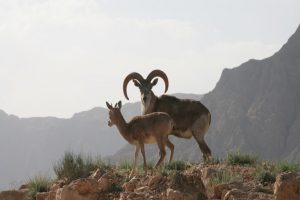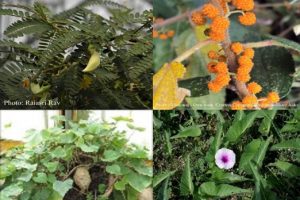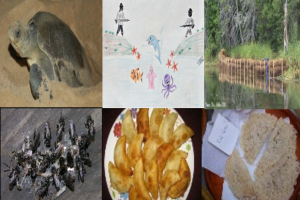EDITORIAL

Welcome once again.
We are slowly approaching one of the major seasonal changes in the hemispheres along with crop cycles, animal migrations (bird, butterfly, caribou) and festivals. Interestingly, these activities of nature also craft the socio-cultural and religious identity of the human society which makes up an integral part of biodiversity. Human social behaviour, cultural preference, religious inclination, and adaptive capacity are few of the key players between biodiversity maintenance and livelihood improvement. In the human-nature interface, language acts as a medium of communication to understand, explore and maintain natural world dynamics. For instance, the diversity of vernacular names and their underlying reasons, local wisdom of natural phenomena, traditional resource use patterns, aesthetic and spiritual connections with nature are the areas where language has a domineering role. Linguistic diversity is as astounding as biodiversity and is also under severe threat like its biological counterparts. Given worldwide concern on vanishing indigenous languages, United Nations declared the year 2019 as “Year of Indigenous Languages (IY2019)” to raise awareness as well as to acknowledge their enormous contribution towards the global cultural diversity. Our first article penned this relevant issue with an emphasis on how nature and culture are complementing each other in terms of language and whether a coordinated strategy can be implemented to conserve both of them. Likewise, from the uniqueness of language diversity we land on the forests of “living fossil”, located in the Ziarat valley of north-western Pakistan. Amidst the rugged terrain, extreme weather and feisty tribesmen, there lies ancient juniper forest, one of the very unique kinds in the world. An internationally acclaimed ecosystem, Ziarat junipers are the lifeline of the region. This forest supports a myriad of lifeforms both plants and animals, provides ecosystem services and is the socio-cultural identity of the local people. Our second article presents a snapshot of the Ziarat valley, an under-explored biodiverse region. Next in line, our third article deals with another endangered life form, small fishes of eastern India. Once ubiquitous in all inland aquatic ecosystem, they gradually vanished from nature due to systematic aggression of market-friendly big fishes, both native and exotic. On their vanishing trail, issues like change in the aquatic ecosystem, impact on poor man’s diet, micronutrient deficiency, and so on resurfaces. This fishy article reminds us of the diversity of lost fishes and their importance in our life.
In the wild food section, this issue covers species of Debregeasia, Ipomoea, Pueraria, and Sesbania, which are commonly available but under-explored in the local food market. Hope this documentation on their culinary use may help us to ponder over the diversification of our food habit and to resurrect our acceptance to the cost-effective nutrient resource.
The snippets flaunt interesting combinations of natural phenomena as well as human-induced interventions. There are many shades, Olive Ridley turtles affected by global climate change, carnivorous vulture bees, coconut coir as coastal erosion breaker, Guantanamo bay prison as a research centre and, sticky rice from Bengal.
Enjoy your reading.
RAJASRI RAY
ARTICLES
Linguistic and Biological Diversity: Patterns of Co-occurrence and Opportunities for Coordinated Conservation
Researchers from a range of disciplines frequently remind us of the enormous challenges that Earth will face in the coming decades. Climate change, unprecedented levels of human population, enormous amounts of resource extraction to meet the needs of that population, widespread pollution, and other characteristics of the 21st century will present humans and the other species that share our planet with conditions that, at the very least, will make life much more…
Junipers of Ziarat – a living heritage for the humanity
Far from the Arabian sea, the arid rugged terrain of west Pakistan and adjoining Afghanistan poses a challenge for human being to make a living out of it. This apparently not so amiable feature of the Earth takes a break at Ziarat, where resides one of the largest and oldest Juniper forests in the world. Located in the periphery of Quetta (133 km) – the provincial capital of Balochistan, at an altitude…
Small edible fishes of eastern India: consequences of their declining diversity
One Fish, Two Fish, Red Fish, Blue Fish………..big fish big fish…..but no small fish! Yes, a key portion of small fish has already eluded our plate, so from their wild habitat. Thanks to organized fresh water aquaculture that homogeneously produced big fish only objectively eradicating small native fish species that once were abound in various water bodies of eastern India. A bit of data check from the report of National Bureau of Fish Genetic…
WILD UNCULTIVATED EDIBLE PLANTS OF INDIA
WILD UNCULTIVATED EDIBLE PLANTS OF INDIA
Part 3 (……after part 2) Debregeasia longifolia (Burm.f.) Wedd. Family: Urticaceae A shrubby plant commonly known as ‘wild rhea’ and is one of the widely distributed members of the nettle family Urticaceae famous for stinging hairs on their leaves. However, this apparently thorny member has wide acceptance among tribal people for its sweet edible fruits. Commonly available in the Western Ghats of Southern India, the ripe fruits (known as Neerinch or Monili)…
GLIMPSES OF NATURE AND CULTURE
Glimpses Of Nature And Culture
Climate worries turtle too…. “Climate change”…….we are really feeling it now. Be it tropical rainforest, temperate boreal forest or arctic tundra, the sun is getting mightier year after year. Not only we humans, there are reports how plants reciprocate by changing their flowering and fruiting time or their habitats, birds change their nesting habits and migration pattern, even insects are facing the threat of extinction. The list of victims stretches longer day…





